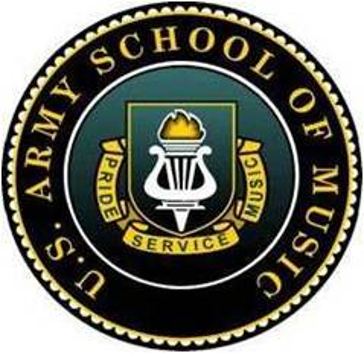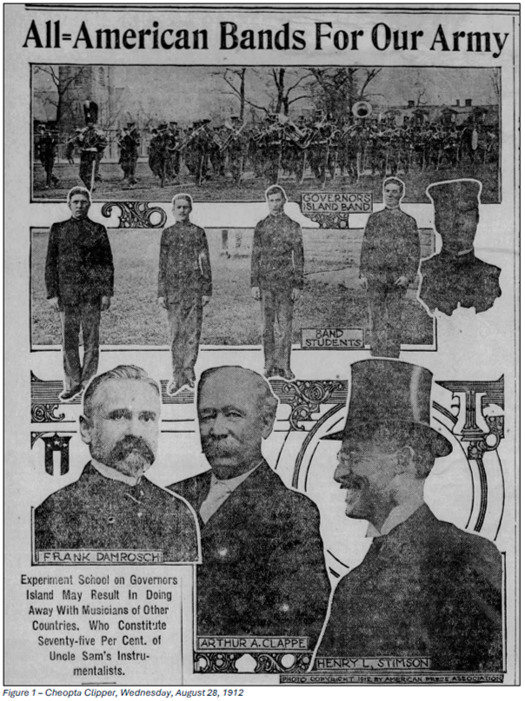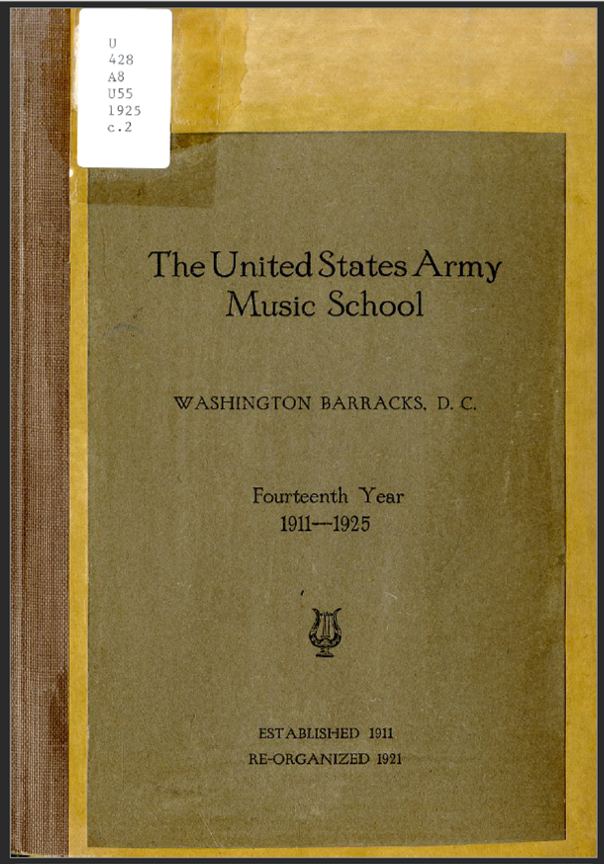History of the U.S. Army Music School, 1911-1928

By CW5 Russell Houser, Army Bands Proponency Officer
CW5 Houser's study investigates how historical forces shaped the Army Music School from 1911 to 1928.

Extant research on the Army Music School is minimal. Evidence accrued from contemporaneous publications revealed mostly monumental and antiquarian histories. However, gathering the data to create a chronological realistic history enabled a thematic analysis method to examine the emergence and changes of reasons to begin, support, sustain, or discontinue the school. These themes were grouped within political, military, social, historical, and economic forces.
Ultimately, the military force was identified as the most significant force acting on the Army Music School, contributing to its discontinuation. A critical historical examination reveals possible lessons for Adjutant General's Corps and Army Bands leaders in 2024 using these observations. These lessons were seen in the
balance between musical and Army operational focus.
Additional lessons were identified by examining who benefitted from the Army Music School, which focused almost exclusively on music-related concerns. Finally, CW5 Houser included several topics for further critical historical research.
To read CW5 Houser's in its entirety, click HERE.
The U.S. Army Music School Autobiography, 1911-1925.
1911:
• Operations began at Fort Jay, Governors Island, NY.
• Founded through the efforts of Dr. Frank Damrosch and Mr. Arthur A. Clappé.
• Ten wind instrument scholarships provided by the Institute of Musical Art.
• Five candidates were selected to start a two-year course at the Institute of Musical Art.
1912:
• Preliminary theoretical exams were sent to all Army Regiments in the U.S.
• 10 of the 75 candidates were selected for a final assessment, and five were admitted to the Institute.

1913:
• The inaugural class graduated.
1914:
• Recommendation for adding a band of 25 recruit musicians approved by the Secretary of War.
1917-18:
• World War I efforts expanded the Army Bands program.
• Civilian applicants for band leader positions were examined.
• Shorter courses were established for successful candidates.
• Percy Grainger and Ralph Leopold collaborated with the School.
1920:
• The Army Symphony Band was founded to aid in recruiting and demonstrate artistic possibilities.
• Concerts at the Hippodrome, Madison Square Garden, and the Academy of Music in Brooklyn.
• The Army Music School is designated as a Special Service School.
1921:
• The School moved to Washington Barracks, D.C., under direct War Department supervision.

1922-25:
• School leadership entailed a Captain as Commandant, a Principal of Music, an Assistant Principal of Music, an Executive Officer, and a faculty of six specialists.
• Focused on practical work: conducting, arranging, and instrumental performance.
• Three-year enlistment was recommended for aspiring musicians: one year at the school and two years with a Regimental Band.
